
Batterie-Wärmemanagementsystem
Elektrisch betriebene Klimaanlage
Motorbetriebene Klimaanlage
Ladegeräte für Elektrofahrzeuge
This DC fast charger has more advanced quality and better texture. Because the materials used are EU standards.
Steckerstandard: CCS1 / CCS2 / CHAdeMO / GBT *2
Kommunikationsprotokolle: OCPP1.6J oder OCPP2.0
Qualitätszertifizierung: ISO9001, IATF16949, TÜV, CE, ect.
Anwendung: Autobahnen, Städtische Zentren, Kommerzielle Flotten, Öffentliche Verkehrsmittel, Ladestationen, usw.
This DC Fast Charger can charge two EVs at the same time and intelligently distributes the charging power with its dynamic load balancing feature. This improves the utilization of charging power and increases profitability. It belongs to our high-end DC Fast Charger, which complies with EU standards from the inside out in terms of individual modules and materials. Therefore the quality and texture of the product is even better. The protection level is also higher. The relative cost is also more expensive. But it is worth every penny.
The two charging connectors support a wide selection of standards: CCS1 / CCS2 / CHAdeMO / GBT.
TKT DC Fast Charging Stations have eine breite Palette an Ladelösungen. Die Produkte wurden in mehr als exportiert 40 Länder auf der ganzen Welt. Insbesondere, Es hat langfristige und stabile Kooperationsbeziehungen mit namhaften Unternehmen wie BYD und Tata Motors aufgebaut.
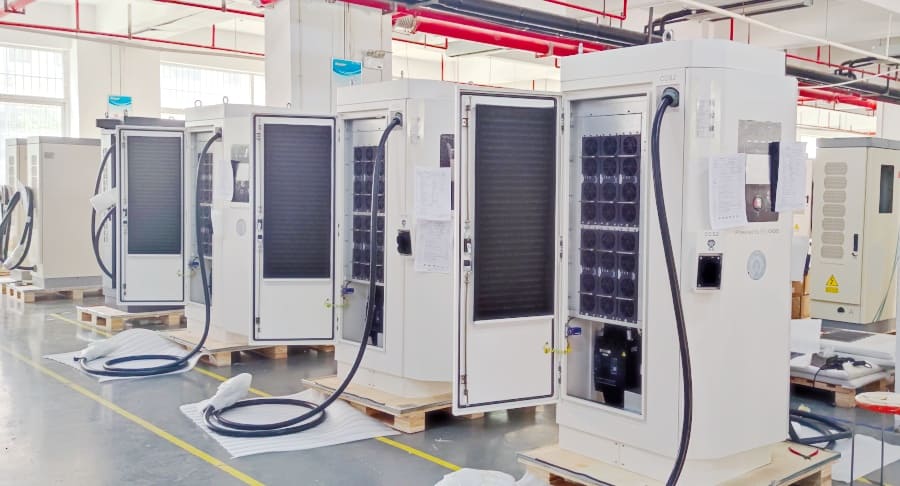
DC Fast Charger Factory
1. Compatible with OCPP1.6 and OCPP2.0 open charging protocol.
2. The cloud platform service system integrates Ethernet and 4G communication to realize billing, settlement, report statistics, Wartung der Ausrüstung, Fernüberwachung und -verwaltung.
3. Mobile phone App can realize functions such as positioning, code scanning charging, real-time inquiry, usw., and support various payment methods such as credit card.
4. Perfect security design. With real-time detection and safety protection, Geräteanomalie vor der Diagnose, BMS unabhängiger Sicherheitsschutz und andere Funktionen. Schutzart IP55. Mit Übertemperaturschutz, Kurzschlussschutz, Auslaufschutz, Batterie-Anti-Reverse-Verbindung und andere Schutzfunktionen.
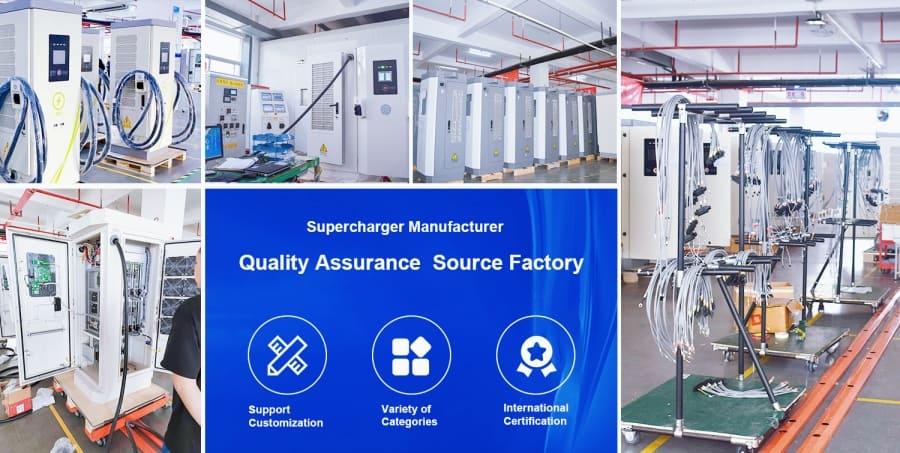
1. Mehrfacher Schutz: umfassender Schutz für Fahrzeuge, Menschen und Ausrüstung.
2. Modulares Design: Upgrades und Wartung sind flexibel und einfach.
3. Schnelles Aufladen: Für gängige Elektrofahrzeuge, Ladezeit dauert nur 30 Zu 60 Protokoll.
4. Dynamischer Lastausgleich: Verbessern Sie die Ladeeffizienz und die Auslastung des Ladestapels.
5. Erweitertes Managementsystem: einfach für Kunden zu bedienen. Die Managerdaten sind klar.
6. Hunderte Patente: ausgezeichnete Qualität, erschwinglicher Preis.
Erfahren Sie mehr über die 6 Vorteile
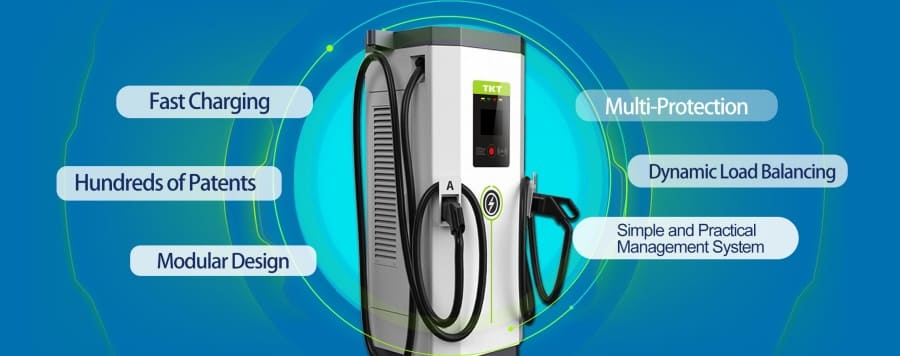

Hinterlassen Sie gerne eine Nachricht Email:md@tkt-hvac.com und lassen Sie sich von unseren Experten kompetent beraten. Wir unterstützen OEM-Anpassungen. (Scrollen Sie nach rechts, um den vollständigen Inhalt auf Mobilgeräten anzuzeigen)

DC-Ladeanschluss
| Leistung (kW) | 60kW / 90kW / 120kW / 150kW / 180kW / 200kW / 240kW / 300kW / 360kW | |||||
| Eingangsspannung | 3-Phase 400 V/440 V/480 V + 15 % Wechselstrom | |||||
| Arbeitsfrequenz | 45-65Hz | |||||
| Ladeschnittstelle | CCS1 / CCS2 / CHAdeMO / GBT *2 | |||||
| Leistungsfaktor | ≥0,99 | |||||
| Effizienz | ≥94 % | |||||
| Bildschirmgröße | 8” LCD-Touchscreen (Maximale Helligkeit über 800nit) |
|||||
| Support-Sprache | Chinesisch, Englisch, Russisch, Andere Sprachen unterstützen die Anpassung | |||||
| Zahlung | Mobile APP / RFID / POS | |||||
| Netzwerkverbindung | 4G, Ethernet | |||||
| Kommunikationsprotokolle | OCPP1.6J oder OCPP2.0 | |||||
| Charging Cable Length | 5M / 7.5M / 10m optional | |||||
| Arbeitstemperatur | -35°C – +55°C | |||||
| IP-Klasse | IP55 The air inlet and outlet have a honeycomb design and are multi-layered waterproof. The mesh is dense, the air duct is shortened, and the heat dissipation area is large. Effectively prevent water spray from any angle. (Überspannungsschutz, Unterspannungsschutz, Überstromschutz, Kurzschlussschutz, BMS-unabhängiger Sicherheitsschutz, usw.) |
|||||
| High Specification Materials | G60 corrosion-resistant hot-dip galvanized sheet and thickened aluminum-zinc coated sheet Double-layer anti-corrosion spraying process, in line with QUALICOAT CLASS 1 standard |
|||||
| Three-layer Air Filter | Stainless steel filter, G4 grade dust-proof filter cotton, long maintenance cycle, effectively dust-proof and moisture-proof, and prevent strong wind backflow. | |||||
| Zertifikat | ISO9001, IATF16949, TÜV, CE, IEC61851-1, IEC 62196-2 | |||||
| Wenn Sie weitere detailliertere technische Parameter des Produkts benötigen, Bitte kontaktieren Sie uns. Eine Nachricht hinterlassen Email:md@tkt-hvac.com | ||||||
1. Ladelösungen für große Flotten
Zu den häufigsten Arten gehören öffentliche Verkehrsmittel, Transport- und Logistikbranche. Wir haben in den USA eine Ladestation für Elektrobusse errichtet, Busladestation in Kanada, Taxi-Ladestation in Australien, Ladestation für Elektro-Lkw in Großbritannien, usw. Unser DC-Schnellladegerät hat die Häufigkeit der Fahrzeugfahrten um mehr als erhöht 20%.
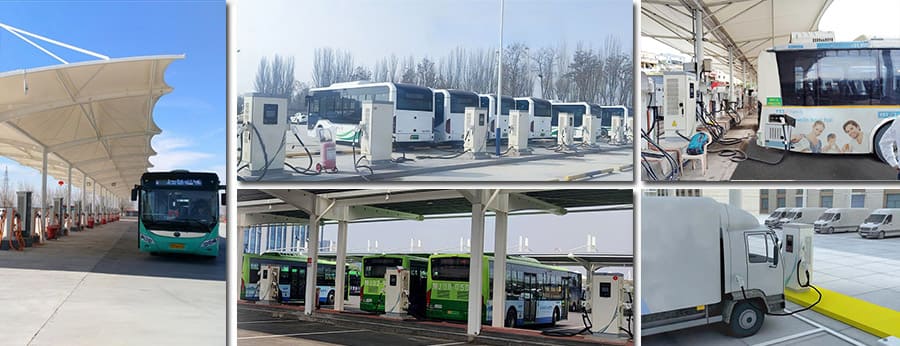
Klicken Sie hier, um weitere hochauflösende Fälle anzuzeigen
2. Ladelösungen für alle Gewerbestandorte
Mit der Popularität von Elektrofahrzeugen, Immer mehr Geschäftsräume benötigen DC-Schnellladegeräte. Zum Beispiel, Ladestationen für Bürogebäude, Parkplatz E-Ladestationen, E-Ladestationen für Hotels, Ladestation für ein Einkaufszentrum, Tankstellenladegerät, usw. Wir haben in mehr als exportiert 40 Länder und Regionen einschließlich Thailand, Indien, Malaysia, Mexiko, Deutschland, und Frankreich.
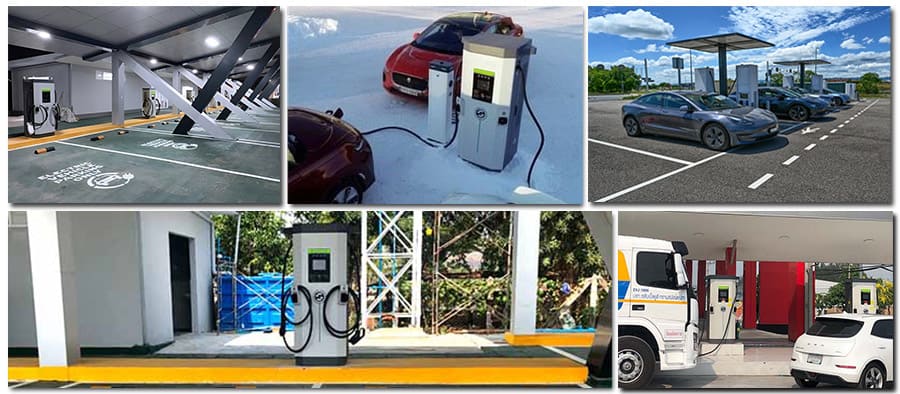
Klicken Sie hier, um weitere hochauflösende Fälle anzuzeigen
DC-Schnellladegerät, also known as DC fast charging station, is a kind of professional charging equipment that quickly replenishes electric energy for electric vehicles through DC. This charging method can directly transfer DC high-voltage electricity to the vehicle’s power battery through the charging port, providing charging service for the vehicle in a short time with a large DC current.
Usually DC fast charger is level 3 Ladegerät für Elektrofahrzeuge, usually with power ranges of 30kw, 60kw, 90kw, 120kw, 150kw, 180kw, and 200kw. Allgemein, Ebene 3 EV charger is a highly efficient, fast, and convenient way of charging for electric vehicles that need to replenish electrical energy quickly.
DC charging station generally use three-phase, four-wire AC power of 380V ±15%, which can provide more current and power, usually between 30kW and 200kW. AC charging station is generally under 7kW.
Zweitens, DC charging station adopts DC charging method. It has quickly converted AC power into DC power, which can be directly transmitted to the power battery. This way eliminates the slow process of converting AC power to DC power by the EV on-board charger.
The working principle of a DC fast charger is that it converts the input AC power into DC power through internal electronic devices (rectifier, inverter, usw.). The electric energy is then quickly delivered to the power battery of the electric vehicle through a high-power charging interface. Auf diese Weise, the effect of fast charging can be achieved.
The AC charger is different. It only provides AC power to electric vehicles through sockets and cables. The electric vehicle charger then converts the alternating current into direct current for charging. daher, the charging speed is very slow.
Speziell, the workflow of the DC fast charger is as follows:
1. When an electric vehicle is connected to a DC fast charging station, the charger will first communicate with the vehicle to identify the vehicle’s charging needs and battery status.
2. The electronic device inside the fast charging station will convert the input AC power into DC power and adjust the output voltage and current according to the needs of the vehicle.
3. Direct current is delivered to the battery of the electric vehicle through a high-power charging interface to achieve fast charging.
4. When the battery is fully charged or reaches the predetermined charging level, the charger will automatically stop charging and notify the user that charging is complete.
During the entire charging process, the DC charging station will monitor the charging status of the battery in real time to ensure battery safety and charging efficiency.
The speed of DC fast charging station depends on a number of factors, including the size of the power battery capacity configured in the electric vehicle and the power of the charging pile. Allgemein gesprochen, DC fast charger can charge an electric vehicle to 80% of its capacity in 30 Protokoll, and it can be fully charged in about one hour.
I’ll use the Hyundai Kona electric vehicle 65 kWh as an example.
Charged at a level 2 Ladestation (7kw), Die Zeit für eine vollständige Aufladung beträgt ca 9.29 Std..
Charging at TKT Level 3 Ladestation (180kw), Die volle Ladezeit beträgt ca 22 Protokoll.
DC fast charger can provide voltages that typically range from 150 volts to 1,000 volts. The exact voltage value depends on the characteristics of the EV battery and the charging speed required. Higher voltages increase charging speeds, but also require more complex equipment and higher costs. This EU-Compliant DC Fast Charger of ours is made of raw materials of high EU standards. daher, it will all be more expensive than normal DC chargers.
The vast majority of electric vehicles can use DC fast chargers, but older electric vehicles may only support AC charging. The exact charging speed of an electric vehicle also depends on how much DC fast charging power the battery management system of the electric vehicle supports.
Allgemein gesprochen, NEIN. This is because DC fast charger is more powerful and require a professional installation team, commercial high voltage and related safety measures. Zusätzlich, its cost is relatively high. For home users, AC slow chargers or portable charging devices are generally recommended for charging.

Wir legen großen Wert auf Produktqualität, und wir werden bis zu führen 16 Vor jeder Lieferung erfolgt eine erneute Kontrolle. Dazu gehören Verkabelung und Routing, Isolationswiderstandsprüfungen, Leistungsschalter- und Not-Aus-Funktionsprüfungen, DC-Prüfungen der internen Stromversorgung, Touchscreen-Überprüfungen, Thermistorprüfungen, Überprüfung der Lüfterfunktion, Überprüfung des Ladeverlaufs, Funktionsprüfungen der Fernkommunikation, und mehr.
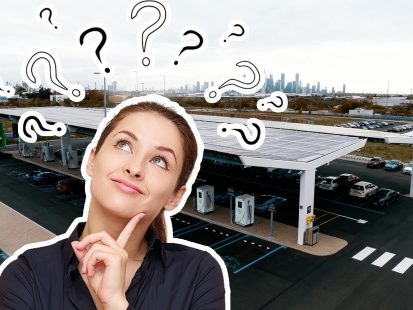
This article will use some failed cases to illustrate the risks of EV charging station investment. Don’t miss it if you’re interested!
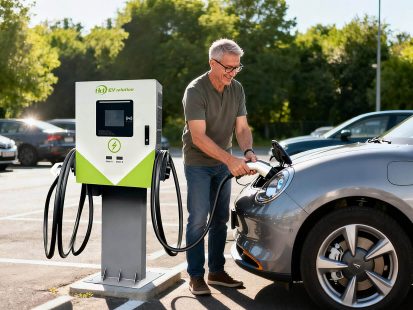
Verstehen Sie das 60-kW-Ladegerät für Elektrofahrzeuge: Ihre bevorzugte Wahl für schnelle und effiziente Ladelösungen für Elektrofahrzeuge. TKT ist ein professioneller Hersteller.

Die elektrische Dreirad-Rikscha hat sich zur besten Wahl für den Kurzstreckenverkehr in Städten und ländlichen Gebieten entwickelt.